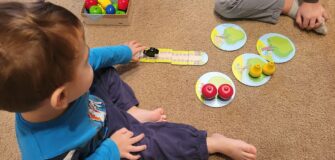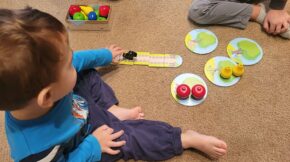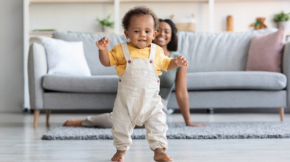20 Creative Sensory Room Ideas
Share
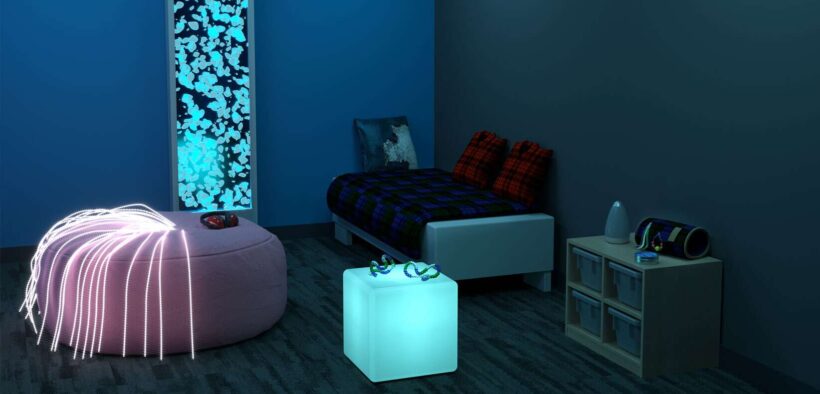
A sensory room is a specially designed therapeutic space that provides a controlled, adaptive environment to meet the sensory needs of individuals with sensory processing disorders, autism spectrum disorder, ADHD, anxiety, or other conditions.
By creating a room with a variety of equipment, activities, and sensory stimuli, families can tailor the space to enrich development, encourage communication, improve focus, and help manage stress for their child or family member.
The ideal sensory room allows the user to safely experience different sights, sounds, scents, textures, and movement activities that provide calming or stimulating sensory input.
When thoughtfully designed with the individual’s needs in mind, a home sensory room offers a dedicated area for self-regulation and sensory play right within the comfort of home.
If you are looking to create a calming yet engaging sensory room, here are 20 sensory room ideas to help you successfully design a space that caters to therapeutic goals.
1. Choose a Space Away from Distractions
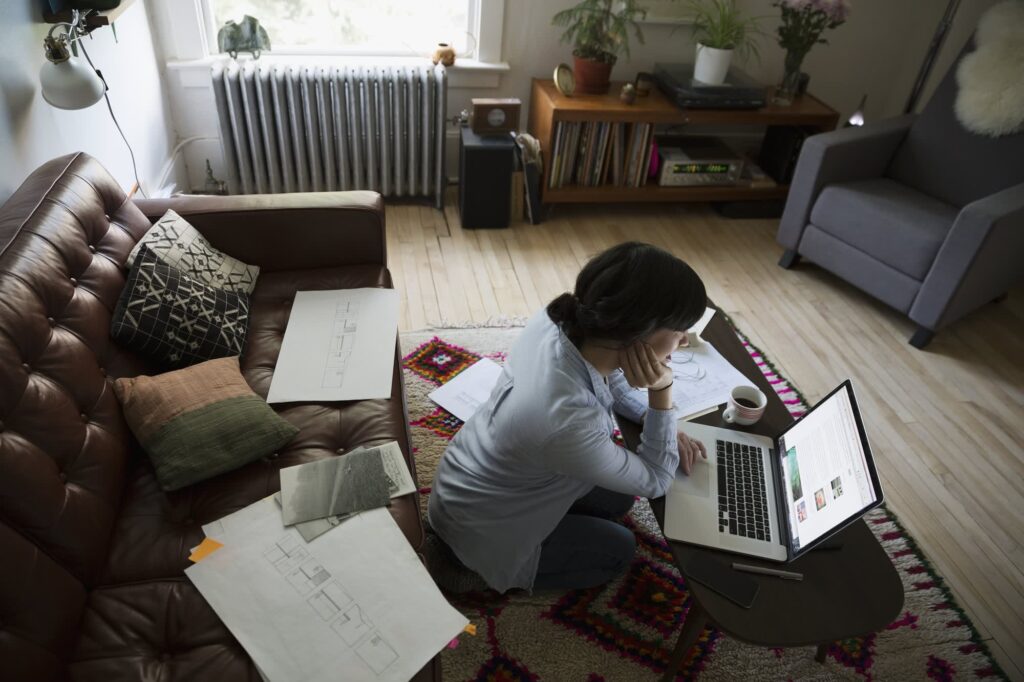
Pick a low-traffic area without too much audible or visual stimulus from the rest of the home or facility. A bedroom, playroom, or spare room works well for a sensory room. The space should allow for alone time but still enable supervision as needed.
Make sure the area is safe and free from choking hazards or fall risks. Choose a room with adequate space for the equipment and activities planned for the sensory room. Hard flooring like wood or laminate is easy to clean if sensory materials are messy.
Try to pick a space away from loud areas of the home and limit outside distractions. A location on the ground floor is ideal so the individual can access the sensory room independently.
2. Block out Light and Sound
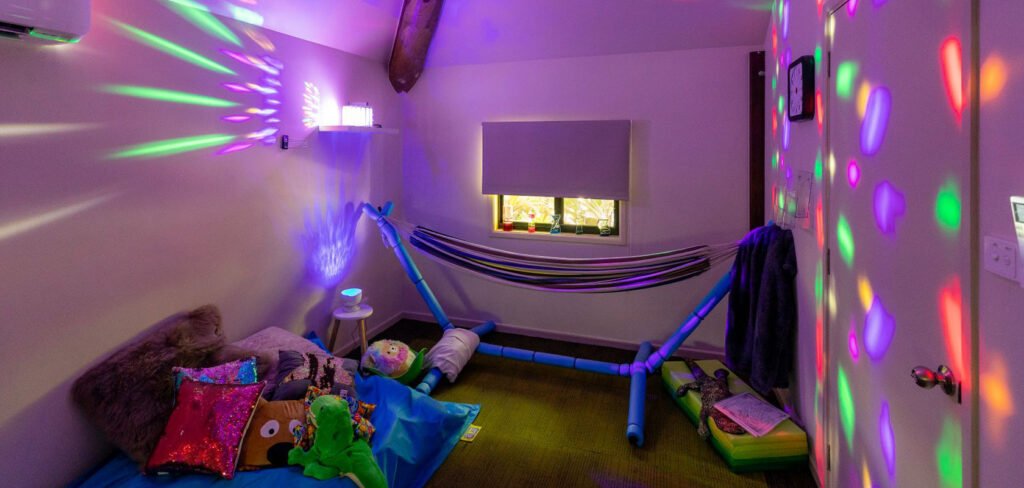
Control the amount of light and sound coming into the space. Blackout curtains or blinds help darken the room, creating a calming atmosphere. Additional window treatments like drapes or shades provide further sound dampening. Area rugs and wall hangings can reduce echoes and absorb excess noise in the space.
If needed, install foam tiles or acoustic panels on walls to prevent reverberation and filter external sounds. White noise machines or calming nature sounds played through a speaker can help mask any persistent outside noises. Keep the door closed whenever possible for additional acoustic isolation.
For safety, make sure the room has adequate ventilation if blocking light and sound fully. Creating a quiet, darkened sensory space helps minimize overstimulation.
3. Incorporate Soothing Lighting
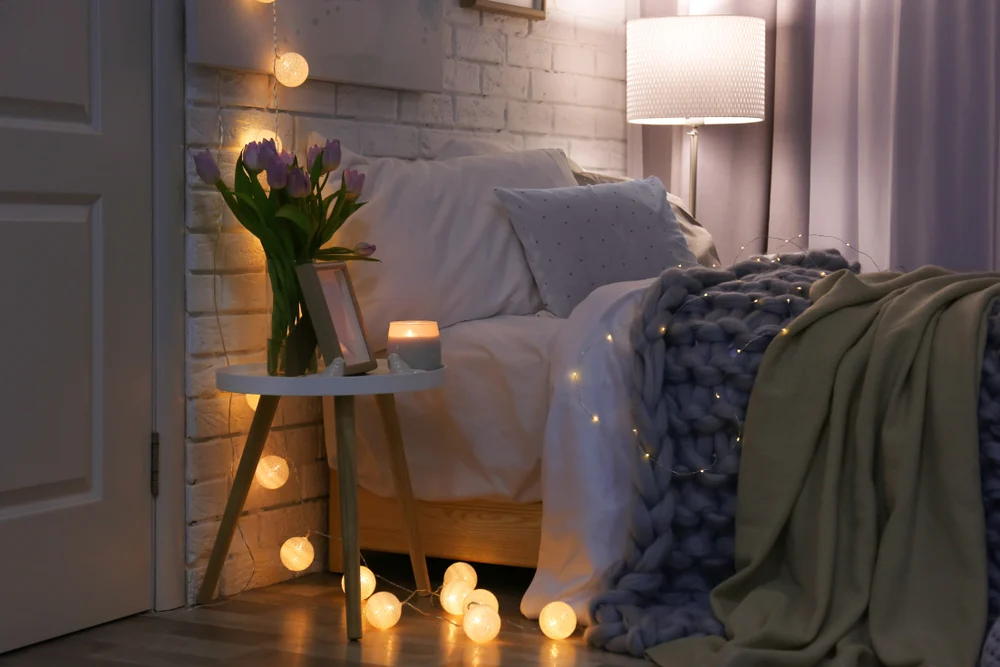
Harsh overhead lighting can be stressful. Install dimmer switches to control brightness in the room and prevent glare. Swapping out ceiling light bulbs for those with a warmer tone helps create a calmer ambiance. Light filters placed over fixtures and globe-style bulbs diffuse and soften lighting. Wall-mounted fiber optic light strands, a bubble tube, a disco ball, or abstract light-projected shapes provide relaxing visual effects. Rope lights or string lights lining the edges of the room offer a warm, cozy glow.
Placing lamps in corners or along accent walls adds pools of gentle light. Use lighting to create zones within the space, brightly lit activity areas, and separate, dimmed relaxation nooks. Adjustable and adaptable lighting allows for customized sensory experiences.
Here are some sensory lighting options.
4. Choose the Right Colors
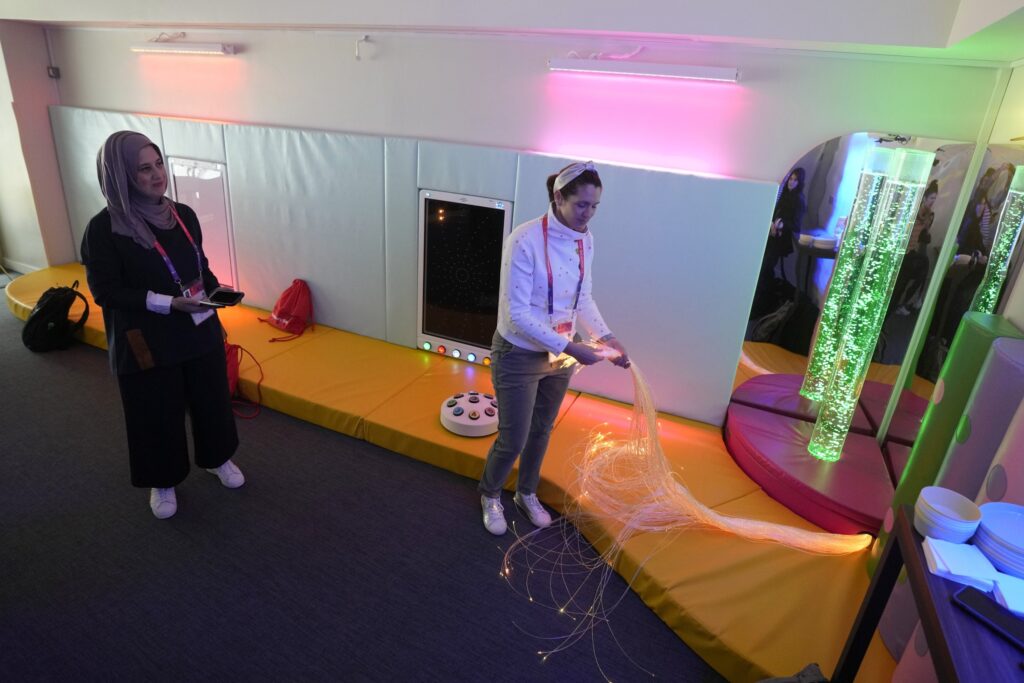
The colors used in a sensory room impact mood and emotions. Cool, calming colors like light blue, lavender, minty green, and neutral earth tones help promote relaxation in the space. Avoid overstimulating reds, oranges, and bright yellows. Repaint walls in muted, non-glaring shades or use removable wall decals to transform the backdrop with peaceful imagery.
Match floor mats, pillows, bean bags, and other seating options to the wall colors for a coordinated look. When selecting fabrics for elements like curtains or hanging sensory tools, opt for blues, greens, and purples.
Unexpected pops of contrasting accent color add visual interest. However, keep patterns simple and soothing. Monochromatic color schemes in calming colors can help create a relaxing environment.
5. Add Soft Textures and Fabrics
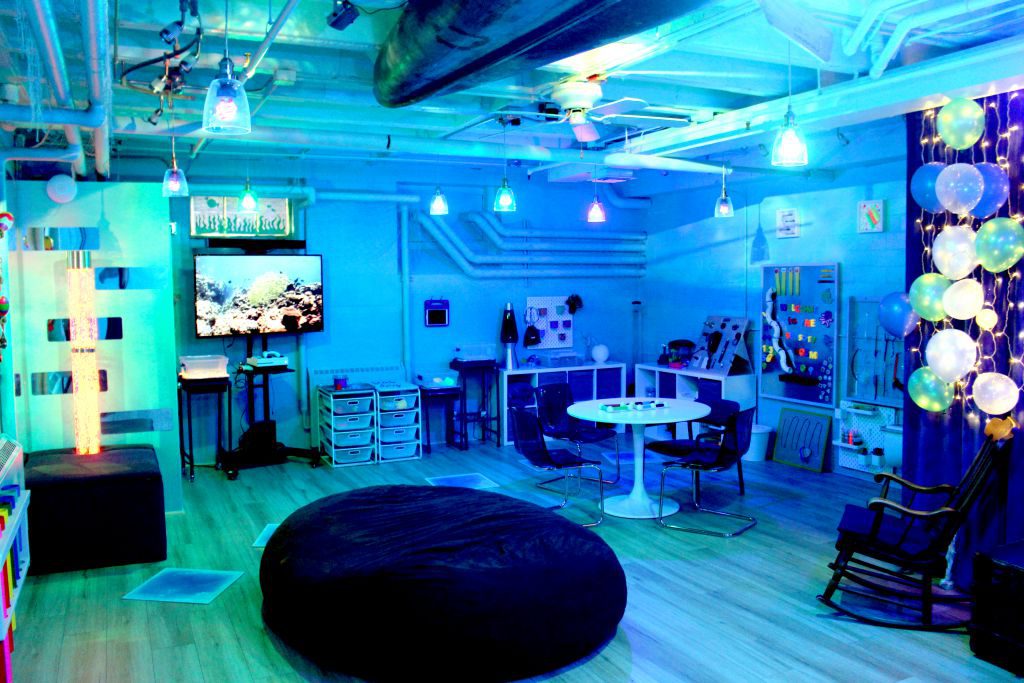
Incorporate a variety of tactile surfaces in the sensory room options with soft/coarse, smooth/bumpy, and squishy/firm textures to provide contrasting sensory input. Blankets made of fluffy fleece, fuzzy fur, woven wool, or lightweight cotton provide comforting warmth and touch.
Stretchy lycra bands hung from the ceiling or between two points allow for pulling, wrapping, and resistance exercises. Play tunnels made of nylon fabric create dark, snug interior spaces to crawl through.
Hanging ribbons at varying lengths feel silky, flowing through fingers. Foam mats covered in soft vinyl are washable. Look for textured toys like squishy stress balls, weighted stuffed animals, and sensory brushes. Having an array of touch-based objects enables experimentation with calming and stimulating textures.
6. Provide Cozy Spaces
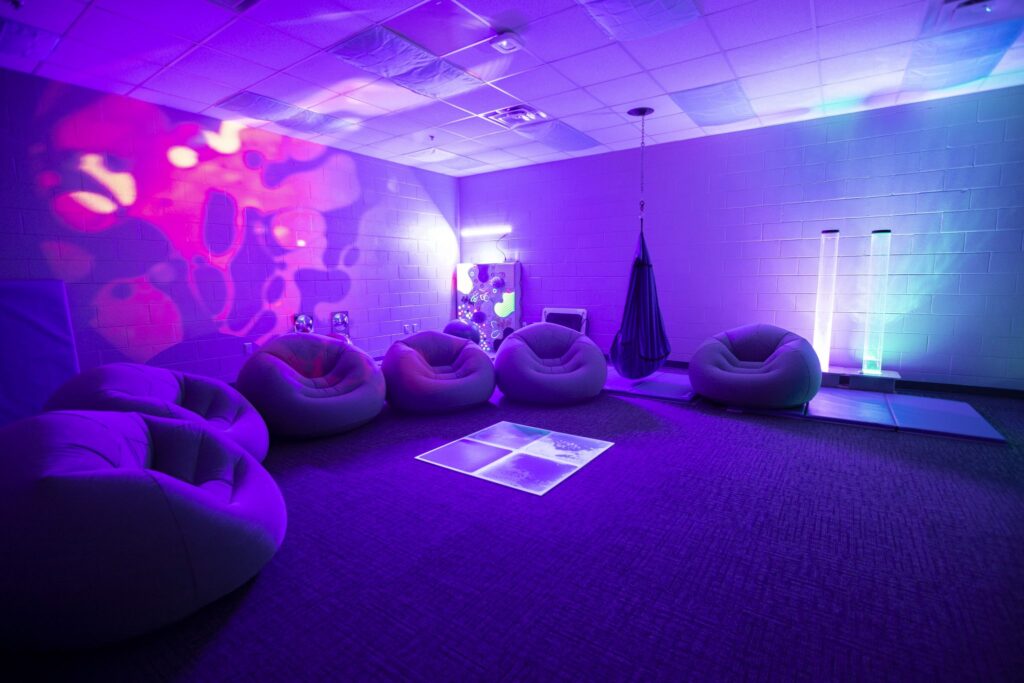
Creating small, cozy spaces for alone time provides a sense of security. Place a soft floored tent or pop-up fort equipped with comfy pillows and blankets as an enclosed retreat space.
Hammock-style swings suspended from the ceiling or mounted on a stand allow gentle rocking and swaying for calming vestibular input. Sturdy, weighted sensory blankets have built-in pockets to slip arms and legs inside, providing a hug-like feeling of applied pressure.
A cocoon seat made of stretchy fabric conforms around the body, molding it to its natural shape for a feeling of being wrapped up. Provide bean bag chairs in a variety of sizes for sinking into.
A foam crash pad covered with soft faux fur offers a space to crawl onto and feel protected. Look for unique small spaces like hollow ottomans to climb inside.
7. Display Soothing Images
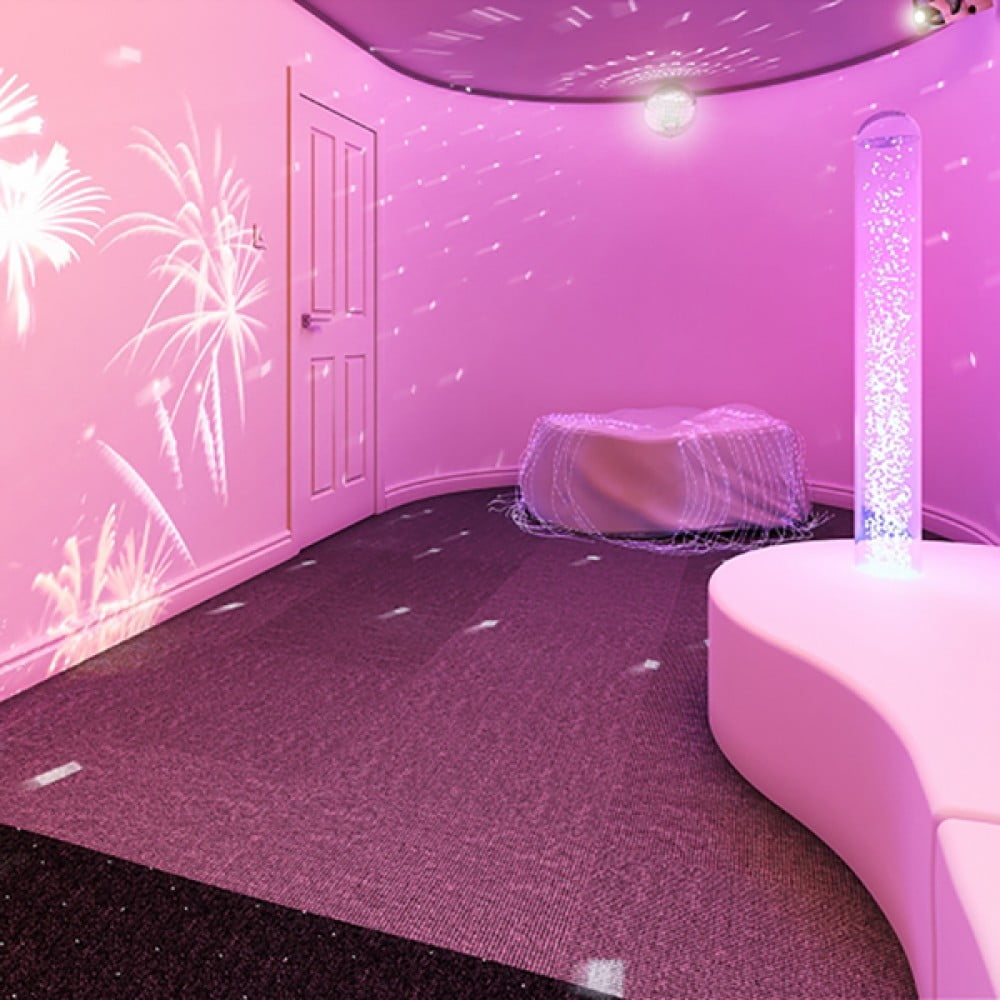
Surround room users with beautiful imagery to create a relaxing atmosphere. Frame and hang posters and pictures of nature scenes, landscapes, forests, beaches, sunsets, flowers, animals, outer space, or abstract art.
Use a projector to display calming videos of fish swimming, large aquariums, scenic places, or slowly drifting clouds up on a blank wall. Fibre optic curtain lights have color-changing strands that evoke watery or ethereal scenes. Fill clear plastic sensory bottles partway with colored water and add glitter, beads, pebbles, sand, or tiny sea creatures for a satisfying focus item.
Allow personalization by letting individuals select artwork or decor they find enjoyable. Provide sensory books filled with high-contrast or whimsical images. Rotate items periodically to keep visual stimulation novel and interesting.
8. Add a Comforting Aroma
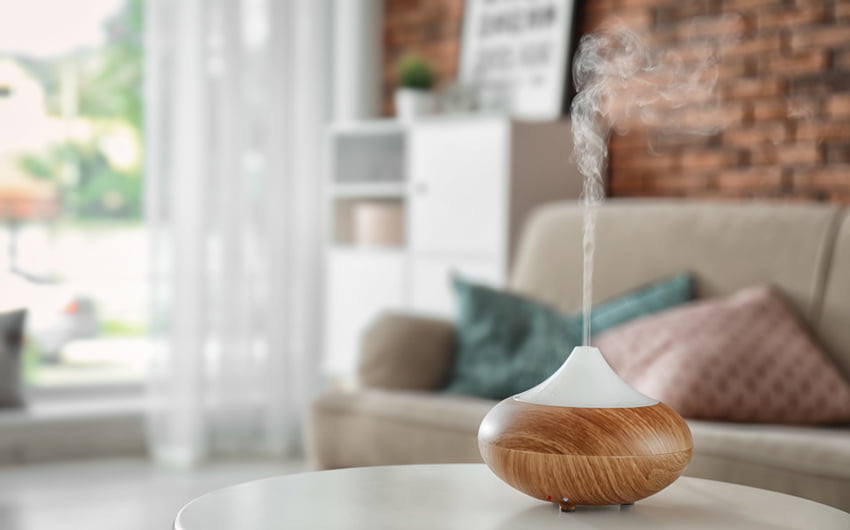
Introduce soothing scents through the calming use of essential oils. An electric diffuser can waft relaxing aromas like lavender, chamomile, sweet orange, rose, vanilla, pine, and jasmine through the air. Allow the individual to pick their preferred essences. Limit diffuser usage to short intervals so the smell does not become overpowering in the contained room space.
Battery-operated diffusers are safe and portable. Individual scent vials can be placed by chairs or play areas. Use scented lotions or body sprays for children and teens to self-regulate with; apply to wrists or feet. Avoid too much aroma stimulation by prohibiting food or drinks in the sensory room. Provide odor-neutral zones by offering some unscented areas or toys.
With soothing scents, the sensory room can provide an additional layer of aromatherapy.
9. Include Fidget Toys and Objects
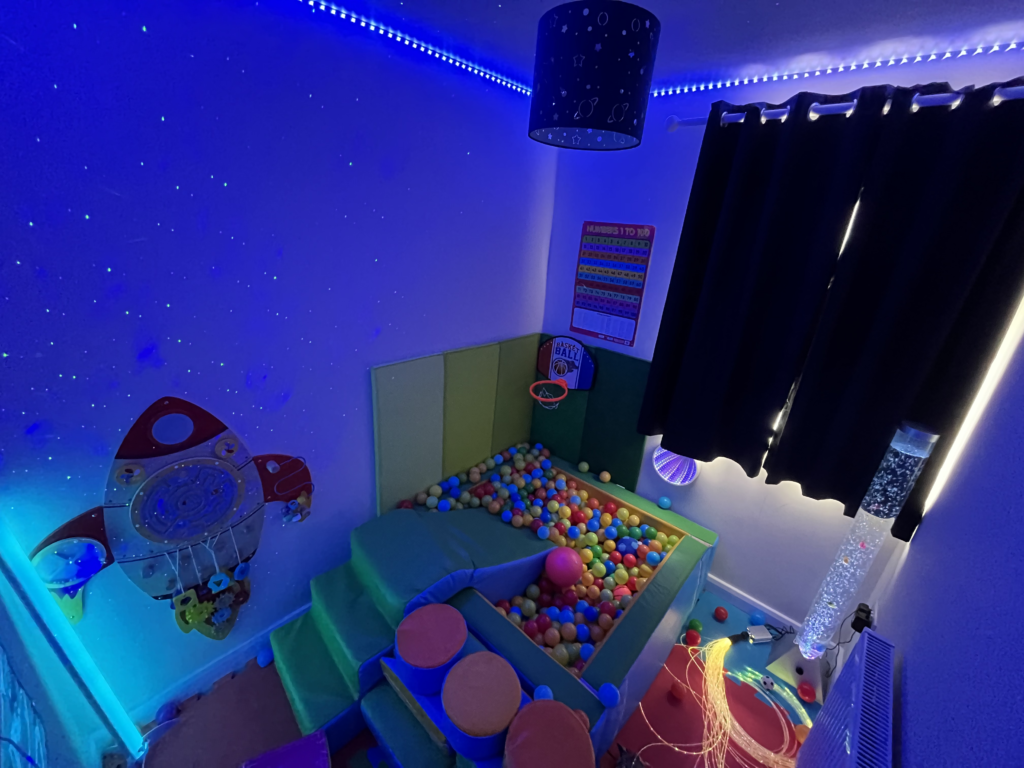
Provide a variety of fidget toys for sensory input and keep hands occupied. Kinetic sand, Play-Doh, putty, molding clay, and slime provide squishy, moldable textures. Fidget spinners and cubes, snap beads, mini Zen gardens, and Rubik’s cubes give fingers something tactile to manipulate. Look for textured pillows and lap pads with buttons, zippers, laces, and flaps for fidgeting fingers.
Weighted stuffed animals and cozy blankets allow occupants to bundle up while providing the calming effects of gentle pressure. Fill baskets with knickknacks like Koosh balls, tactile keychains, and squishes to flip through and explore.
Simple cause-and-effect battery-powered toys with lights, vibrations, and music react when buttons are pressed. Having an array of fidget objects available provides multiple options for sensory input during calming activities.
10. Provide Auditory Experiences
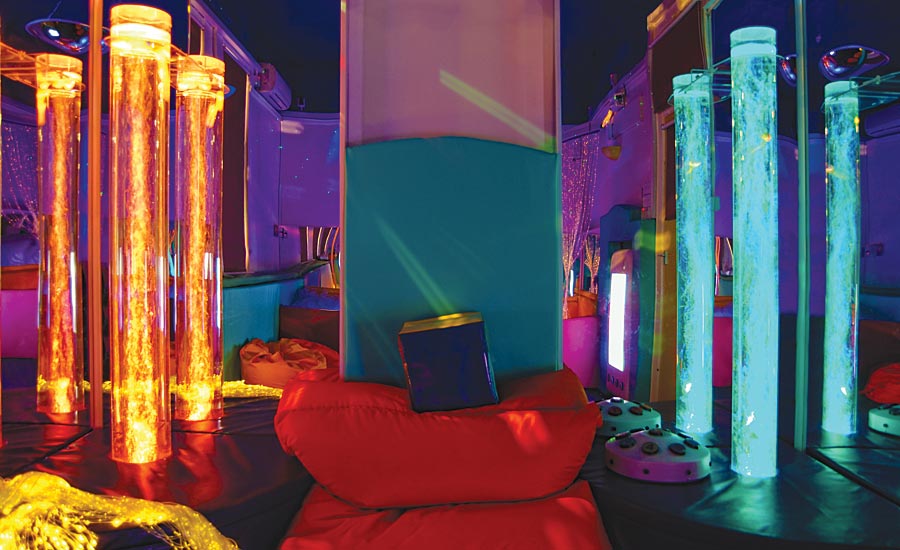
Incorporate equipment for pleasant auditory sensory input throughout the space. A high-quality music player with a playlist of nature sounds, white noise variations, meditative music, ambient electronica, or classical piano loaded onto it provides calming effects through headphones.
Chimes, rainsticks, ocean drums, and other instruments are engaging without being too loud. Include toys with buttons that play instrument sounds for interactive musical fun.
Wind chimes on the wall are visually pleasing and gently tinkling. For learning activities, add keyboards or xylophones. Place tactile speakers under crash pads or floor cushions to feel soothing vibrations.
Keep the sound volume low to prevent noise overstimulation. A sensory room filled with beautiful, calming sounds helps occupants feel immersed in an oasis of serenity.
11. Add Equipment for Sensory Input
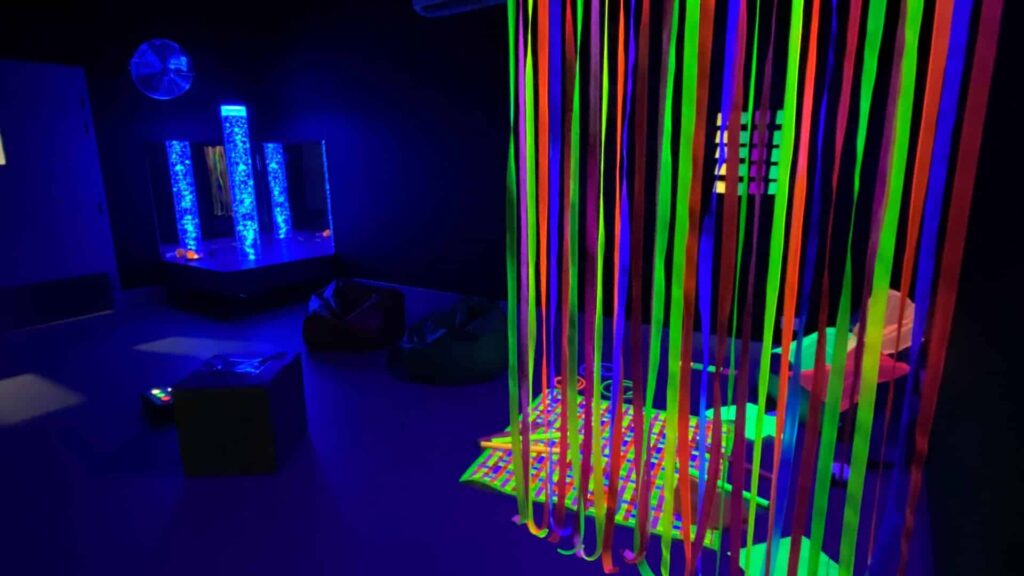
Providing equipment for different types of sensory input adds active opportunities. Large foam mats or padded crash pads give cushioned spaces to jump, roll, and crash on. An indoor mini trampoline lets individuals bounce gently at their own pace for calming sensation. Disc ‘o’ seat cushions allow for spinning seated.
A suspended cocoon swing provides a relaxing motion. Foot massagers or textured foot pathways apply stimulating sensations. For proprioceptive input, therapy putty, weighted lap pads, and compression tools are available. Provide safe equipment for climbing, like padded ladders and rock walls. Social stories and visual timers help teach safe ways to play.
Bean bag and ball pits allow sink-in stimulation. Sturdy sensory swings provide enclosed security. Balance boards and scooter boards strengthen motor skills. Carefully selected equipment enhances sensory room benefits.
12. Include Interactive Technology
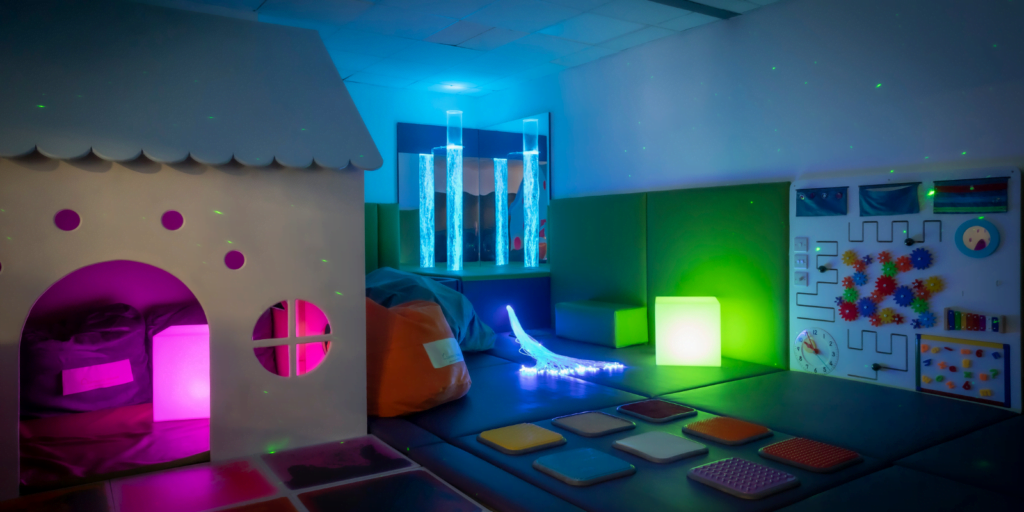
Incorporate engaging and educational technology that responds to touch or movement. Bubble tubes with color-changing lights react when hands disturb the water’s motion. Fibre optic lamps change displayed patterns when tapped.
Floor piano mats play notes when stepped on. Disco balls or light cubes project shapes that dance around the room when occupants move. Immersive projectors display interactive sensory videos, games, and stories on walls that users can influence by reaching out.
Tablets are loaded with apps for calming breathing exercises, art creation, virtual nature experiences, and tactile games. Voice control smart devices like Echo Dots allow for music requests.
Timers like Time Timers show visual countdowns. Technology provides instant feedback. Ensure devices are durable, protective cases are used, and activities are monitored for overstimulation. Interactive technology entertains while teaching cause and effect.
13. Provide Focused Sensory Bins
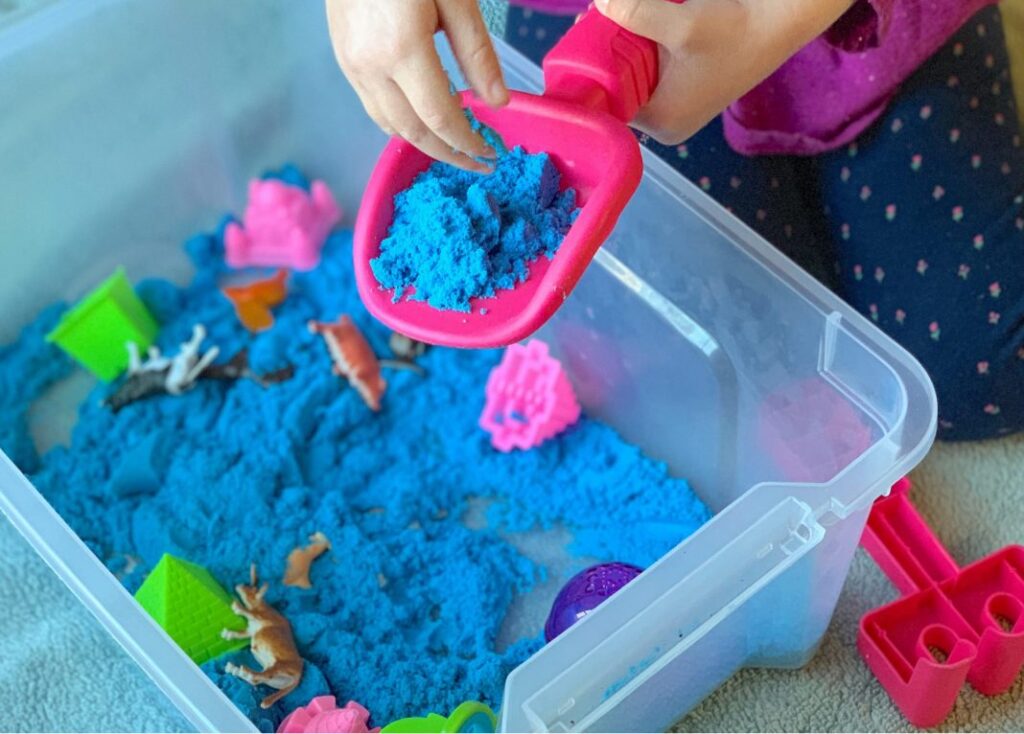
Plastic bins, trays, or compartmentalized tables allow individuals to engage in sensory play and materials exploration while keeping items neatly contained. Fill bins and bowls with kinetic sand, goop, beads, pom poms, water, rocks, dry pasta, bird seed, and other interesting tactile materials. Add plastic shovels, cups, funnels, spoons, and sifters for scooping and pouring.
Rotate the bin fillers to maintain novelty. Using bins helps develop concentration, fine motor skills, and problem-solving as users learn to manipulate items like pouring water between containers. Provide focused tasks like tweezers and pompoms to sort colors.
Let individuals mix their own sensory concoctions. Use bins for calming activities like sorting nature items. Bins give a sense of control over the sensory experience. Just be sure to supervise use to prevent consumption of items. Sensory bins channel play into an engaging, enriching experience.
14. Look for Multisensory Toys
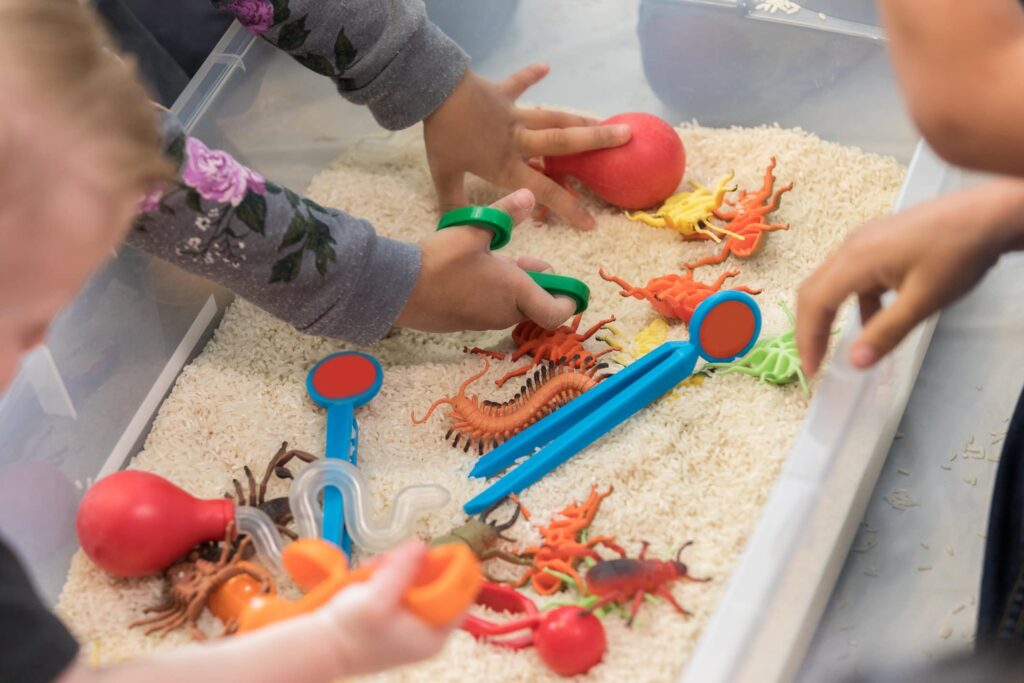
Seek out toys that provide multiple sensory experiences integrated together, adding more value and variability. For example, choose light spinners that are visually stimulating, make sounds, and have spinning and smooth/bumpy textures to touch.
Aquariums soothe with visual water movement, bubbling sounds, and a gently lit interior. Sand and water tables encourage pouring, scooping, and molding while teaching about textures and physics.
Weighted stuffed animals may play calming music and offer soft fur and soothing pressure; some even vibrate gently like a massager. Look for unique toys like ringing rubber chickens that provide noise, textures, lights, and humor. Toys with many sensory aspects built-in provide more immersive, multidimensional play.
Just be cautious of overstimulation and match toys to the specific individual’s needs. With multisensory play options, it’s easier to hit more therapeutic goals.
15. Add a Water Feature
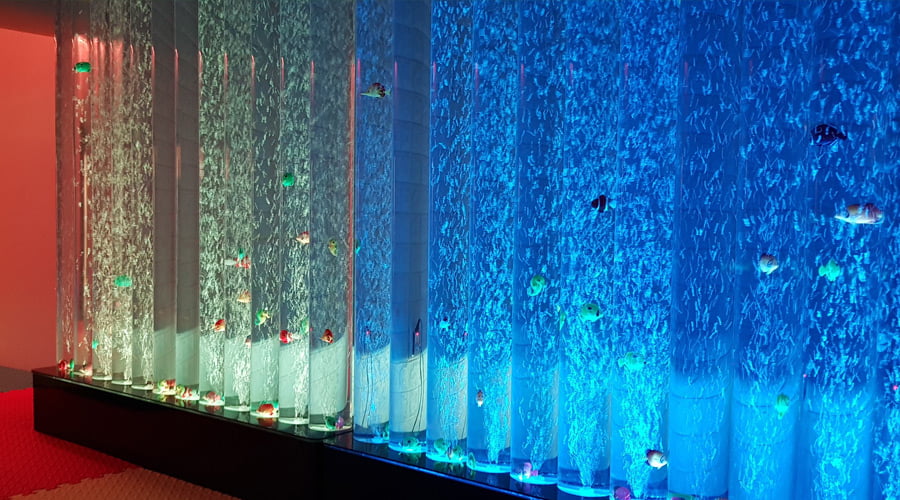
The sights and sounds of moving water can have a very centering, peaceful effect. Consider adding a small tabletop water fountain that bubbles gently with its pleasant trickling noise.
Colorful fish tank decorations create hypnotic motion. Low-maintenance aquatic gardens have flowing water that circulates over pebbles and rocks.
Allow supervised play and interaction with water beads, pouring buckets, spray bottles, water wheels, and shallow splash tubs. Use a projector to display video of moving water up on the walls. Have students paint images of the ocean, rivers, raindrops, etc, and hang them up.
In nice weather, set up water play outdoors with sprinklers, hoses, water tables, slip-n-slides, and kiddie pools (with vigilant supervision). The serenity and science of water engage multiple senses. Just be cautious of slips or mold from leaks, and make sure to schedule drying time after water play or features.
16. Provide Gross Motor Equipment
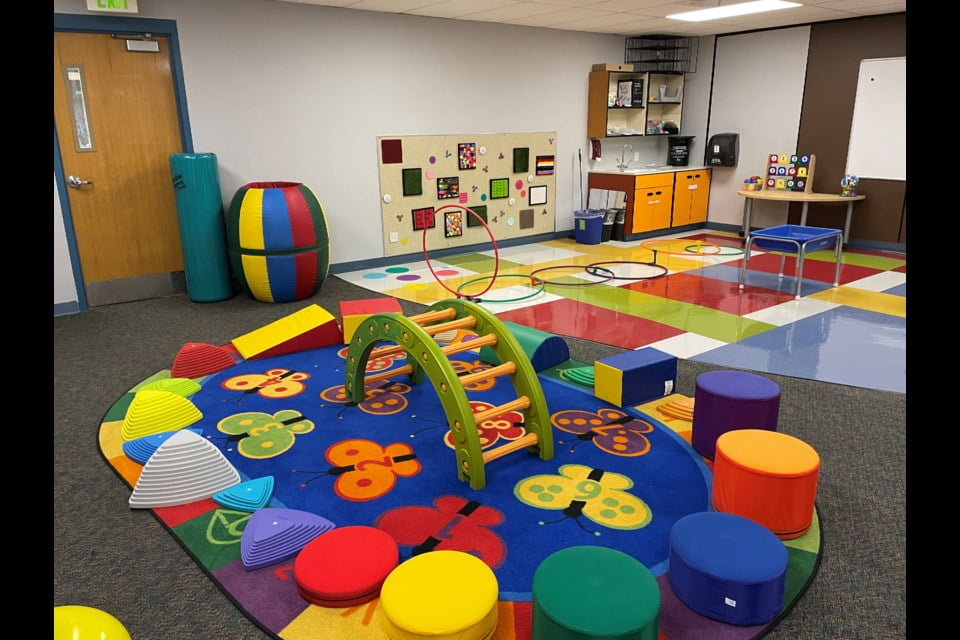
Integrating gross motor sensory equipment allows for therapeutic movement breaks and meeting additional sensory needs. Have obstacle courses for climbing over, under, or through.
Sturdy scooter boards strengthen core muscles and coordination as users propel themselves around. Exercise stability discs, swivel seats, or rocker boards help improve balance.
An indoor suspended swing provides motion sensory input by swinging gently. Install padding or tumbling mats for rolling, somersaulting, and cushioned crashing play. If space allows, adding a small indoor slide can be fun.
Limit quantities of gross motor equipment based on space and establish separate rules to guide usage and prevent overstimulation or injuries. Use cones to define motor play zones. Access to developmentally stimulating, calming movement experiences makes the sensory room more well-rounded.
Children may focus better after a gross motor break. Just be sure all equipment is age-appropriate and sturdy.
17.Incorporate Natural Elements
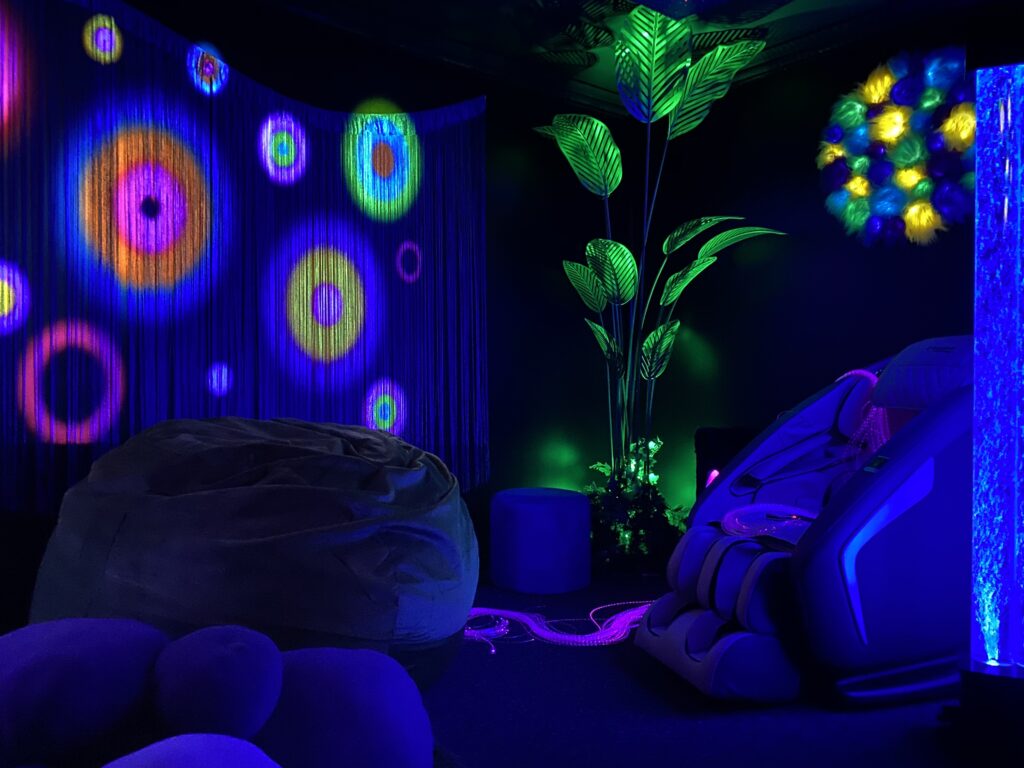
Plants, water, wood, rocks, pinecones, and nature imagery bring the calming sensations of the outdoors inside. Grow easy plants like ivy and suction cup planters they can tend to.
Fill sensory bins with dirt, grass seeds, rocks, sticks, sand, seashells, flower petals, and other nature items to touch and play with. Essential oil diffusers can mimic revitalizing scents like pine trees or fresh rain. Nature-inspired posters, books, and streaming videos of forests or oceans surround room users with organic visuals.
For art projects, provide natural materials like leaves, acorns, sticks, and seeds for collaging. Add a small water fountain or photos of rivers and waterfalls. Use recordings of birds chirping, rain, or ocean waves for nature soundscapes.
A sensory garden can be created outdoors with plantings, stones, wind chimes, and more. Infusing hints of nature promotes relaxation, creativity, and connections to the wider world.
18. Allow for Role Play Activities
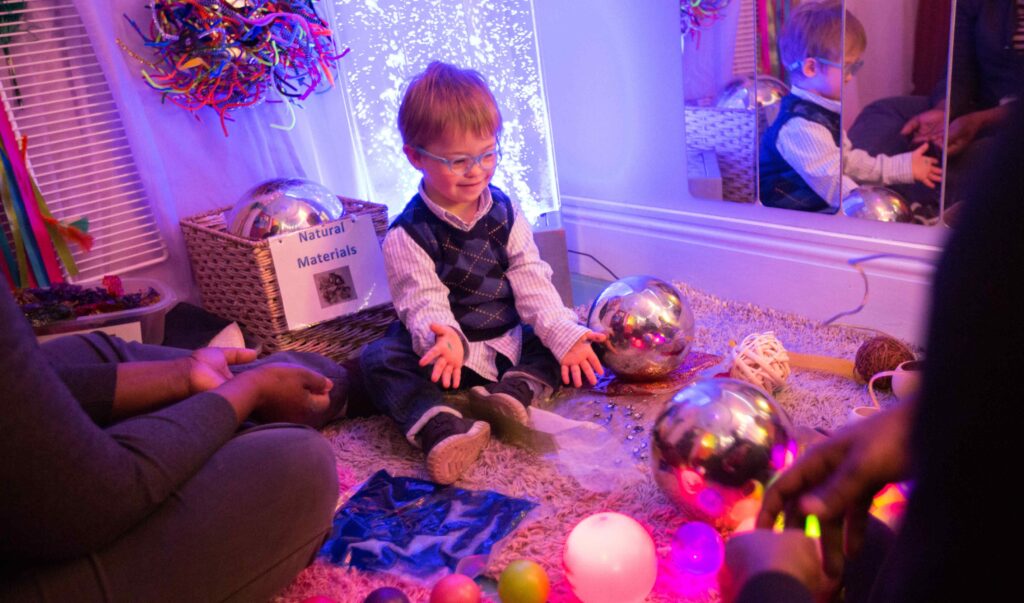
Role-playing builds social-emotional skills and sparks the imagination. Designate part of the sensory room for pretend play stations. Child-sized wooden kitchen sets, play food and dishes, toy medical kits, workbenches, and grocery store checkout sets facilitate interactive role-playing games. Collect fun costumes, accessories, hats, fabrics, and props like musical instruments to use.
Simple puppets, action figures, dolls, stuffed animals, and miniature people, vehicles, or buildings inspire storytelling. Provide toy phones, cameras, microphones, mailboxes, parking meters, kitchen tools, and more for theming play spaces.
Rotate role-play items to maintain freshness and variety. Use role play to teach real-life skills and allow creative self-expression. Have children dictate stories about the characters in dramatic play, then type them into a book. Role-playing can help children develop important skills like confidence, communication, problem-solving, empathy, and leadership.
However, it’s important for adults to pay attention to the themes and content of kids’ pretend play, stepping in if necessary to provide guidance around frightening or inappropriate scenarios. With gentle redirection, role play can be a positive experience that nurtures social-emotional growth. Role play invites the sensory room to come vividly alive.
19. Add Space for Arts and Crafts
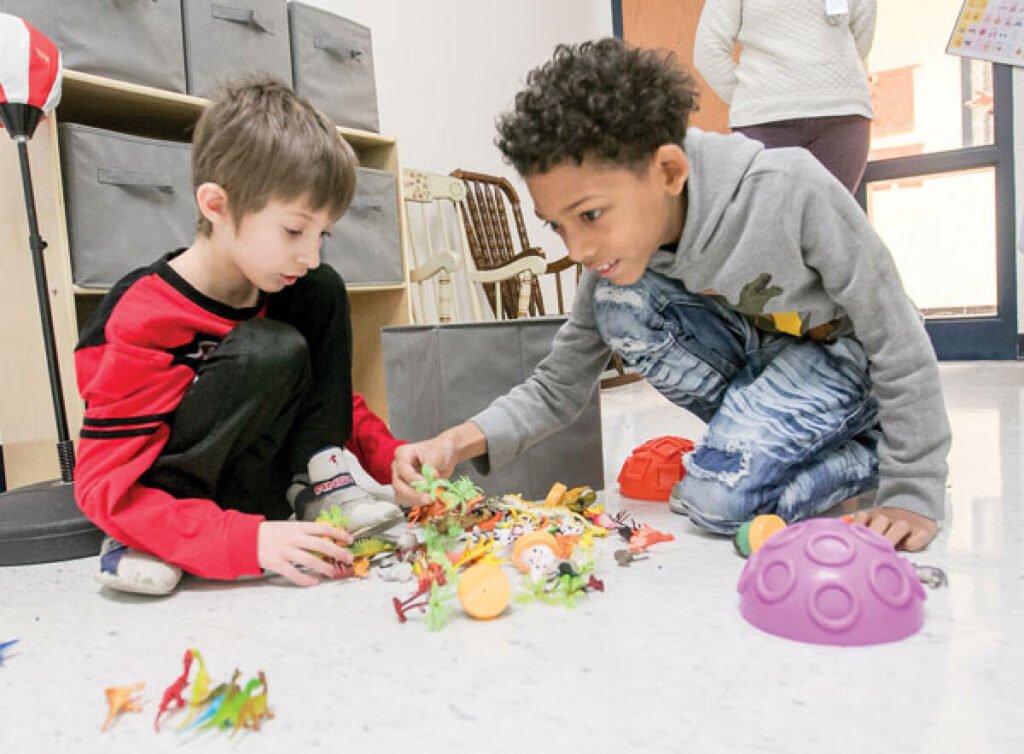
Art and crafting materials engage the senses through creative hands-on projects while cultivating imagination and executive functioning. Designate a section, table, or shelf home for rotating art supplies. Paint, colored pencils, crayons, chalk, glue, safety scissors, stencils, stickers, and blank paper are versatile supplies to start with.
Play-Doh, modeling clay, and kinetic sand develop fine motor strength, focus, and shape-making skills. Gel boards with metal wires or writing templates allow tactile sand art and drawing creations. Add a small easel for painting at standing height. Collage materials like pompoms, googly eyes, natural items, and fabric scraps inspire mixed media art. Water bead art kits teach sorting, counting, and pattern-making through color and texture.
Add blank journals or art books to collect and display finished pieces. Open-ended art experiences encourage self-expression. Just provide smocks or name sticks to keep creations separate. Crafting boosts confidence, problem-solving abilities, and a sense of achievement.
20. Provide Calming Activities
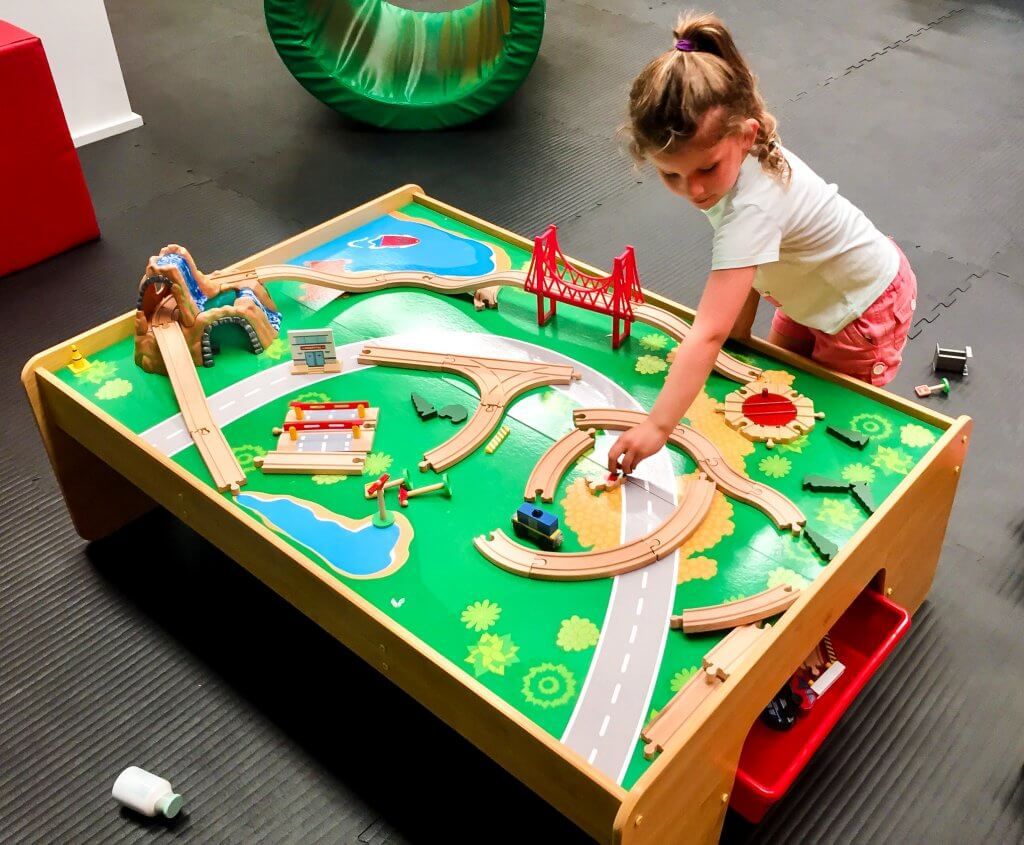
Incorporate activities that require focus, precision, and dexterous manipulation for cognitively engaging, calming time. Puzzles like wooden chunky puzzles or easy jigsaws promote concentration. Have books, audiobooks, and visual picture schedules to help wind down.
Building and stacking toys like Legos, Magna-Tiles, and Lincoln Logs refine dexterity and planning skills through repetition. Sorting toys like nesting blocks, colored bears, and shape sorters improves concentration and categorization.
Sand timers, hourglasses, and Time Timer visual clocks model healthy pacing and transitions. Provide individual folders with mazes, word searches, Mad Libs, word/coloring books, and tic-tac-toe grids. Use visual cues like a stoplight system to indicate when the room is in stimulating play mode, or when it is time to transition to calming zones.
Deep breathing techniques, child’s yoga cards, and guided imagery sessions foster mindfulness. Calming activities refocus energies in a constructive manner.
Conclusion
Creating a sensory room requires careful planning, set-up, and maintenance, but the benefits for the user make the effort worthwhile. Observe what areas and equipment get used most, and adapt the room as needed by changing activities or adding new elements.
Provide regular opportunities for exploratory sensory play and calming relaxation tailored to the individual’s goals. Even simple tweaks can help enhance focus, communication, behavior, and developmental skills with time.
Most importantly, a thoughtfully designed sensory room gives the user a personal space to feel comfortable, secure, and free to engage their senses. By providing such a customized environment, family members can empower their loved ones with special needs with the supportive tools to thrive.
A well-equipped sensory room lays a critical foundation of safety, enrichment, and sensory support so users can feel confident to interact with the world around them.
Individuals can reach their full potential with the proper sensory inputs and freedom to self-regulate.









